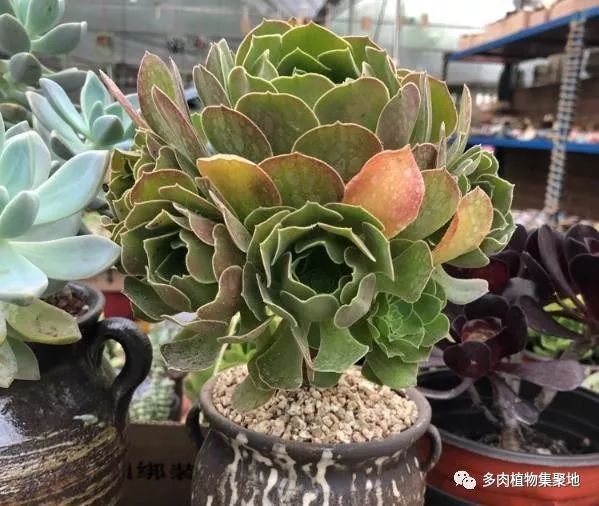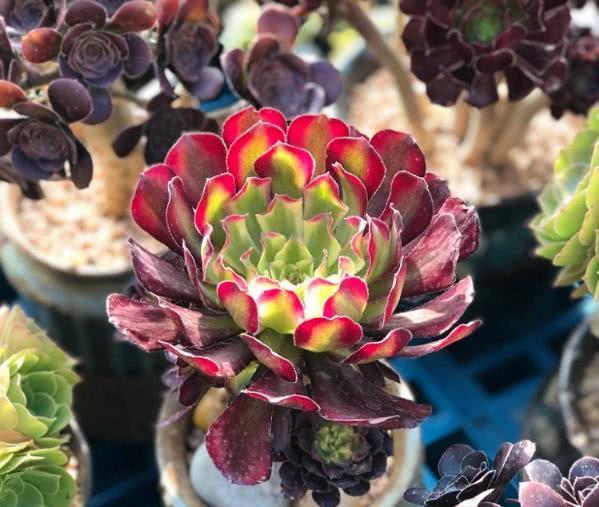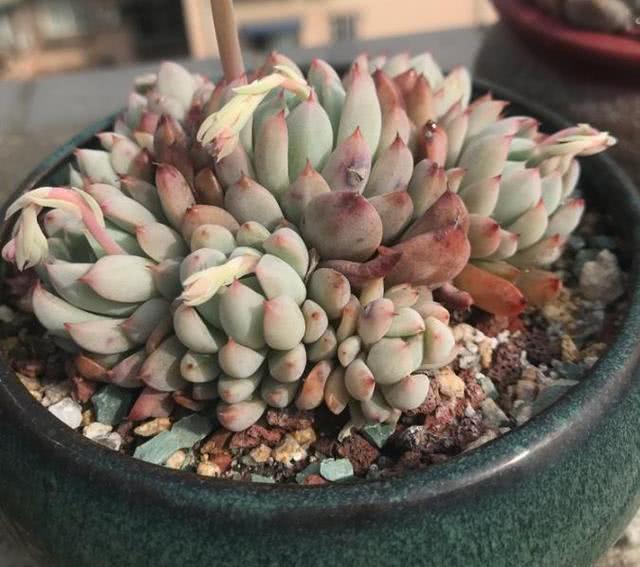If you want succulent plants to be beautiful, you have to make the leaves bright. Here's a way.

If you want the succulent plant to become beautiful, you have to color the leaves, otherwise it will be green and succulent, which is very ugly. There are three elements of coloring, namely, light, temperature difference and water control, the most important of which is light and temperature difference. The greater the temperature difference, the more light the succulent plants will color, so if we want to color succulent plants, we have to increase the temperature difference between day and night and increase the illumination for succulent plants. Autumn and winter are the fastest seasons for succulent plants to be colored. The temperature is suitable. Succulent plants can be raised all day long. They receive a lot of light, and the temperature at night is still very low. If you stay outside for two or three days, you will find that the color of succulent plants has changed obviously.
According to the ecological habits of succulent plants, they can be divided into winter type, summer type and spring-autumn type. The so-called winter type means dormant in summer and growth in winter. The summer type is dormant in winter and grows in summer. The spring-autumn type is dormant in summer and winter, and grows in spring and autumn. In September, most succulent plants enter the second stage of growth, so the basin should be fully watered when the soil is dry. At this time, the summer type can reduce shading and ventilation, but can add topdressing. As for the winter type, it should be ventilated and watered. No matter the varieties of summer type or winter type, we should pay attention to ventilation, only in this way can the plant grow healthily. When the leaves of those summer root species placed outdoors turn yellow, they should be moved into the greenhouse.
What happens when succulent plants grow askew? We know that plants have phototaxis, and succulent plants are no exception. the reason why our succulent plants grow crooked is mostly because they have been placed in the same place for a long time without changing direction. Plants generally grow in a direction with strong light (Chaoyang), and become crooked over time. So how do we get back to our succulent growth? It is very simple, just turn the succulent direction over and put it in the sun. some succulent plants grow faster and are easier to form old stakes. As the succulent plants grow taller, the upper part of the stem will become heavier and heavier, so the stem will be naturally bent. This can not be changed by changing the light, but the shape of the pole will look better when it is bent.
When the autumn rainy season comes, some varieties that are afraid of wet and varieties of tropical origin should avoid direct rain in the event of growth stagnation. September is suitable for sowing, grafting, cutting and so on. For varieties that bloom in winter, pots can be changed at this time. The difference between changing pots at this time and spring is that there is no need for substantial root pruning. There is plenty of sunshine in October, and there is a big temperature difference between morning and evening. Peonies and some apricot plants enter the flowering stage, and the leaves of crassulaceae begin to turn red.
About watering: summer-type species dormant in winter, while spring-autumn and winter-type species grow in spring, autumn and winter. In winter, especially in January and February, summer-type species rarely water or even cut off water, while other varieties can water a small amount. Of course, enough indoor heating in the north, there is no need to refer to this water supply, as for the types of spring, autumn, winter and summer, search in Xianzhen, there must be relevant classification posts, I will not repeat them. January is the coldest month of the year. However, the sunshine in late January is slightly stronger than in December, when the varieties of winter type grow very vigorously, so don't be reluctant to water them. It is important to note that when thawing the plant, it is best to place it in the shade to thaw it slowly, which is better than putting it in the sun.
About dew cultivation: the suitable growth temperature of Sedum is between 10 and 30 degrees. Below 5 degrees, most of the more delicate varieties have to enter the house. In early winter, there is a big temperature difference between morning and evening, often more than 10 degrees during the day and about 0 degrees at night. In such cases, we should pay more attention to the weather forecast to prevent the leaves of Sedum from frostbite. Some skinny varieties are in good condition, with well-developed roots and low dew pressure, but we should also pay attention to rain and snow as much as possible. When the water storage capacity of the epidermis is large, frostbite is relatively more likely to break.
Here is a gathering place for succulent plant lovers, sharing succulent maintenance skills, welcome to follow and exchange.
- Prev

The sudden wilting of the leaves of succulent plants may be caused by the soil.
With the gradual rise of temperature, succulent plants often soften, which makes succulent control people very anxious, in fact, there are many reasons for this situation, flower friends encounter their own fleshy leaves become soft, do not worry, to check the reasons.
- Next

Succulent plants don't grow in summer? Simply turn the basin and still keep it until the basin is blown.
When it comes to turning over the pot for succulent plants, many flower friends worry that they will not be able to raise succulent plants after changing pots. "changing pots to die" has always been the main reason why succulent plants dare not change pots easily, but what I want to tell my friends is that instead of letting succulent plants live, I want to tell my friends that they do not dare to change pots easily.
Related
- Wuhan Hospital Iron Tree Blooming Result Was Instantly Frightened by the Gardener Master
- Which variety of camellia is the most fragrant and best? Which one do you like best?
- What is the small blue coat, the breeding methods and matters needing attention of the succulent plant
- Dormancy time and maintenance management of succulent plants during dormancy
- Minas succulent how to raise, Minas succulent plant pictures
- What are the varieties of winter succulent plants
- How to raise succulent plants in twelve rolls? let's take a look at some experience of breeding twelve rolls.
- Attention should be paid to water control for succulent plants during dormant period (winter and summer)
- Watering experience of twelve rolls of succulent plants
- Techniques for fertilizing succulent plants. An article will let you know how to fertilize succulent plants.

